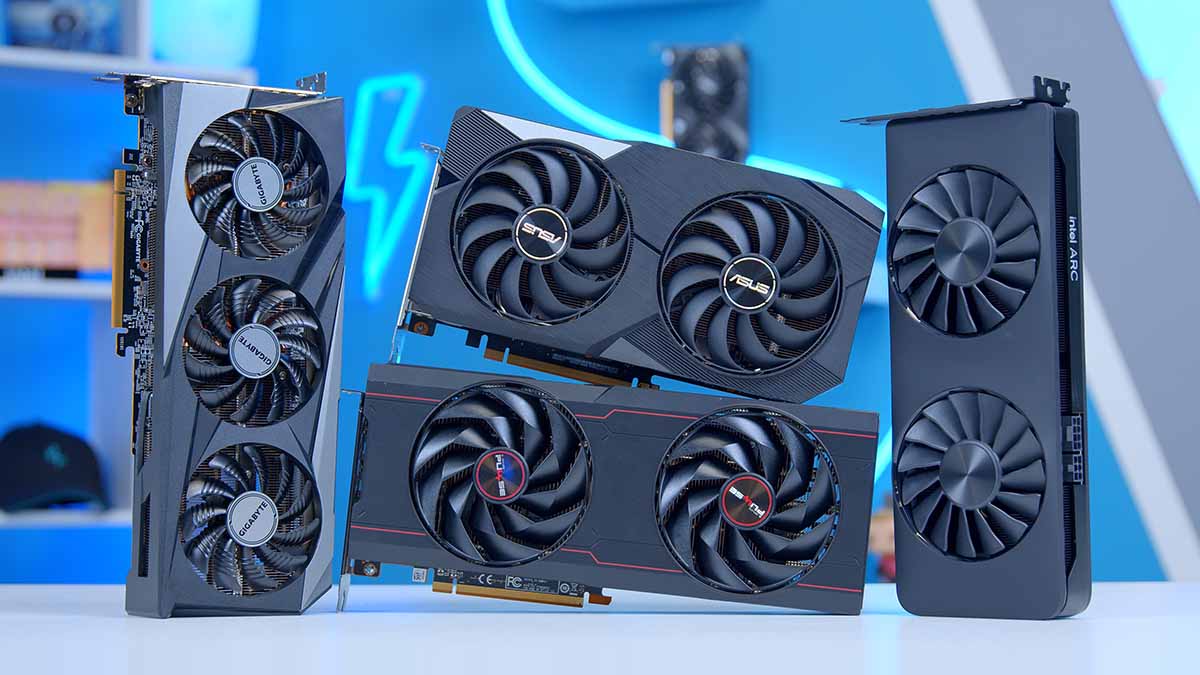Learn about the crucial components of a graphics processing unit (GPU) and their significance in various applications. Discover the intricate details behind the GPU’s architecture, including the graphics processing unit itself, video memory, cooling system, and more.
Graphics Processing Unit (GPU): The Heart of Visual Processing
A graphics processing unit (GPU) is a crucial component in modern computing devices, revolutionizing the way we experience graphics and visual content. It uses advanced algorithms and parallel processing to efficiently execute graphics-related calculations, ensuring seamless high-definition content rendering across various applications.
Video Memory (VRAM): Elevating Graphics Performance
Video memory (VRAM) is a crucial component of GPU architecture, enhancing GPU performance by storing and accessing graphics data quickly. Its design caters to intensive graphics applications like gaming, video editing, and creative content production.
Voltage Regulator Module (VRM): Ensuring Stability and Consistency
The Voltage Regulator Module (VRM) is a critical component in the GPU architecture, regulating the voltage supplied to the GPU to ensure stable performance and longevity and protecting it from potential fluctuations that could affect its functionality.
PCIe Interface: Bridging the Connection
The PCIe Interface serves as the lifeline that connects the GPU to the motherboard, establishing seamless communication and data transfer between the two essential components. Through its high-speed interface, PCIe facilitates the transmission of graphics data with minimal latency, optimizing performance and responsiveness. This interface is instrumental in unlocking the full potential of the GPU, ensuring efficient collaboration with other system components for unparalleled computing power.
Cooling System: Managing Heat Dissipation
The cooling system of a GPU encompasses a sophisticated arrangement of heatsinks and fans designed to dissipate heat generated during intense graphics processing. By efficiently dissipating heat away from the GPU, this system prevents overheating and ensures consistent performance even under demanding workloads. Through innovative thermal management solutions, modern GPUs maintain optimal operating temperatures, prolonging their lifespan and reliability.
Output Interface: Connecting to Display Devices
The Output Interface serves as the gateway through which the GPU connects to display devices, such as monitors and screens, enabling the visualization of rendered graphics content. Whether through HDMI, DisplayPort, or other interfaces, this crucial component ensures seamless connectivity and compatibility with a wide range of display devices. Its versatility and reliability make it indispensable for delivering immersive visual experiences across various computing platforms.
Video BIOS: Fine-Tuning Performance Parameters
Video BIOS is the firmware that controls the GPU’s settings, including clock frequencies, fan speeds, and voltages. It ensures optimal performance and energy consumption by calibrating and optimizing the GPU, allowing users to customize settings for enhanced efficiency.
Interconnection Interface: Scaling Performance with Multi-GPU Configurations
The Interconnection Interface enables the integration of multiple GPUs into a single system, enabling high-performance computing tasks. It uses SLI or CrossFire technologies to synchronize GPU operation, accelerating complex computational workloads and achieving performance gains in gaming and scientific research.
Power Connectors: Supplying Vital Energy
Power connectors are crucial for GPU operations, providing the necessary voltage and current to sustain processing tasks. They are compatible with various power sources and have a robust design, making them essential for reliable and efficient GPU operation.
Conclusion
The Graphics Processing Unit (GPU) is a vital component of modern computing, enabling innovation and performance in various applications like gaming, content production, high-performance computing, and artificial intelligence. Understanding its core components, including the GPU, video memory, and cooling system, unlocks its full potential.
FAQs
What are the primary components of a GPU?
A GPU consists of various components, including the GPU, VRAM, VRM, PCIe interface, cooling system, output interface, video BIOS, interconnection interface, and power connectors.
How does a GPU enhance graphics performance?
A GPU enhances graphics performance by employing parallel processing to accelerate graphics-related calculations, delivering fast and smooth rendering of visual content across various applications.
Why is VRAM essential for GPU performance?
VRAM is crucial for GPU performance as it provides dedicated memory for storing and accessing graphics data, enhancing speed and efficiency in graphics processing.
What role does the cooling system play in GPU operation?
The GPU’s cooling system effectively regulates heat dissipation during graphics processing, preventing overheating and ensuring consistent performance and reliability despite varying workloads.
How do power connectors contribute to GPU operation?
The power connectors provide the necessary voltage and current to the GPU, allowing for efficient and reliable performance and stability in power-hungry processing tasks.
What are the benefits of using multiple GPUs in a system?
Multiple GPUs enhance graphics processing power, allowing users to tackle complex computational workloads more efficiently and quickly, especially in high-performance computing and artificial intelligence applications.

